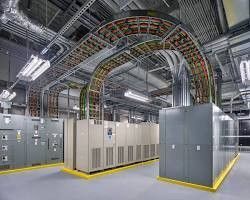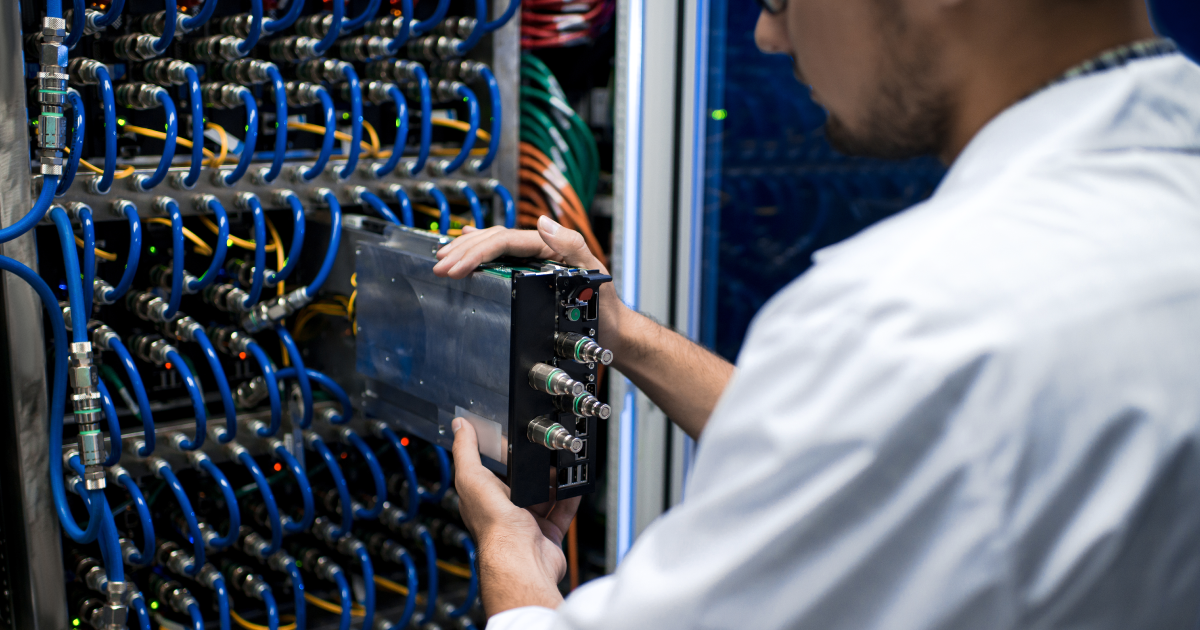‘The cloud doesn’t live in the ‘clouds’, but it could live in "The Land of The Long White Cloud’ Aotearoa, New Zealand’

Written by Paul Haley
Over the last few years, I have been questioned by many people in varying industries around what the future holds for the Data Centre market in New Zealand, having seen the rapid growth around the world and little to none locally to the same scale, I always held high hopes that it would flourish but we always needed the catalyst. Having been in the Data Centre industry for 14 years, having an economics degree, electrical qualification and being a Kiwi, with the recent spotlight being shone on the New Zealand Data Centre industry I thought I would put some content together to supply a different perspective from a local’s point of view which may potentially help flourish a country that has so much potential. Maybe we are finally at the tipping point.
My main answer to what the future held was that connectivity to the world was limited to one subsea cable with no redundancy, the southern cross cable built in 2000, which heavily restricted development and higher data transfer costs. With the increase in connectivity over the last five years with the addition of the Tasman Global Access cable in 2017 and Hawaiki Cable in July 2018 this gave that resilience and capacity availability that we did not have and desperately needed. The future looks even brighter though with the Southern Cross NEXT cable forecast completion in 2022 and discussions of potentially 3 other subsea cables the Transoceanic Cable from Chile to New Zealand and the 2 Datagrid new cables to connect their proposed new 100Mw facility in the South Island. This being true New Zealand would be opened further to have the capabilities to support diverse routes and larger speeds, capacity, and resilience.
Once the connectivity issue was resolved, I think the second biggest problem was that Data Centre’s were never seen as a huge draw card for the country, a limited population and heavily removed from any other substantial population, there was no one that understood the country (a lot of people couldn’t even find it on a map) and have never put time into researching the possibilities and capabilities. To date the main players have been local companies supplying the local market. We always found in the earlier days of working in the industry in New Zealand for EDS that we were a rounding figure for them, we supplied a great service, but it was never going to make an international corporate its targets and sinking extensive capital would not get the returns. This aside with the growth of the industry and the increased requirements for data, cloud storage and the need to house certain information onshore the market seems more viable.
Hyperscale economies of scale is to be a saving grace for the ever-burdened colocation market with increasing uptime requirements and increasing costs. The hyperscale model has given the flexibility for companies to not have to outlay expensive IT equipment, plant and even outlay an entire Data Centre. As we are well aware these can become hindering to a core business with no true data centre background, with no one understanding of the power hungry OPEX and CAPEX intensive beast they become over time which can just be an outsourced service that just works seamlessly and lives in a place called the ‘cloud’. Now in the international market with sites being built by the likes of Airtrunk in APAC from 3 x 100Mw+ sites in Australia to 300Mw in Japan and Digital reality trust announcing a 200Mw Sydney campus and Equinix building its 5th site in Singapore. APAC has a population of around 4.2 billion people and according to a report by Cushman & Wakefield, the overall Asia Pacific co-location data centre market size will be worth US$28 billion in 2024, overtaking regions such as North America to become the largest worldwide. There are new ventures in the Data Centre industry developing at rapid pace with what looks to be financial investors lining up to get into the market for a piece of the largest growing market and a solid return from good length contracts with large international companies, what more could they ask for to diversify a portfolio and stabilise return as in most cases you are investing in not just a technology/data storage facility you are getting real estate, where we see the ‘McDonalds’ model holding true.
The New Zealand Market Drastically changed on the 6th May 20 with an announcement from Microsoft to establish its first data centre region in New Zealand, there was a resurface of more questions than answers. Then 21st May 20 CDC announced its arrival with 2 Auckland facilities of around 20mw and then New Zealand had its first step into the hyperscale market. This news also sent excitement not just in New Zealand but also internationally and put New Zealand in the forefront of a lot of people’s minds whilst Covid continued challenging the world. It also opened-up the new question ‘what are the future possibilities’ and who else is investigating the options. That question was soon to be answered with the announcement that Datagrid are investigating to build a 100Mw Data Centre in Southland and install 2 new subsea cables to support more diversity within the country and to the facility.
To Compare the difference with the 2 new hyperscale companies CDC and Datagrid being at 2 ends of the country this does show that there are options with building a hyperscale facility in New Zealand, with some thinking outside the box. With conditions in the South Island being compared to that of Iceland due to it being the leading Data Centre country in the world, has shown that Auckland may not be the only place to support what is required for a hyperscale facility. The recent articles have been pointing more so towards the South Island due to the climate and favourable conditions for data centres but not the population as New Zealand’s population is heavily centred in the North island 76% and Auckland 33%(of entire NZ pop.) it still has great opportunities which currently has that existing connectivity. The weather conditions in Auckland are favourable and one would expect to see an 70-80% annual free cooling with a PUE in the 1.2-1.3 range, I agree it’s not the 1.1 and 100% of the year but it is good and dependent on how adventurous you could be with temperatures this could be pushed further.
Data centres use about 3% of global electricity production and we have seen a driver for renewable energy to be utilised and to be carbon neutral from the big tech companies. Their focus is on full renewable energy with Google going the next step of full renewable with time matching of the generation required, a lofty target but doable. In 2019 MBIE Electricity in New Zealand stated ‘New Zealand has the third highest rate of renewable energy as a portion of primary supply in the OECD (after Norway and Iceland). 40% of our primary energy supply comes from renewable sources’ which does make NZ very favourable.
The current New Zealand Data centre landscape is not structured like other countries technology hubs which promote areas to be used for technology growth and development with the best connectivity and electricity availability already supplied, which does lead into challenges in all of those areas, Auckland being the major city of New Zealand would have the larger and higher concentration of Data centres and little City planning has gone into the accommodating data centres in general due to lack of understanding the potential opportunity we have.
Covid-19, this has also shown how changeable conditions can be and how drastic of a swing it can take and maybe that little island in the middle of nowhere actually may serve as a valuable resource for a country supplying political stability, reasonably priced land, renewable energy, favourable environmental conditions, New Zealand to consistently rank at the top of the Corruption Perceptions Index (CPI) number 1 with Denmark and generally a great place to live.
Growth
Data becoming one of the most valuable resources in the world, requirements to house data onshore and companies wanting to hold information for longer periods of time does leave an ever-increasing demand without factoring what the future holds for new technology.
Talking to people in the industry it is still a very unknown quantifiable amount with the likes of 5G and the capabilities that can be realised once we have the speeds and a consistent network to utilise across a country, IOT, films and TV HD 8k, gaming, Autonomous Vehicles, mobile phone capabilities and camera quality, Video conferencing, matching this with edge computing for lower latency, more local caching and the desire to always have more capacity and speed will drive the market. As Covid struck and the surge in video conferencing platforms like Zoom use of the firm's software jumped 30-fold in April 2020 seeing a peak of 300 million daily participants and as lock downs started change in capacity use across networks saw peak times drastically change that have never been seen before.
New Zealand being a large draw card now for film and TV production facilities with the help of Sir Peter Jackson It has become a mecca more so since Covid has struck with movies like Avatar, Mulan, Bebop Cowboy and the Lord of the Rings series has shown an influx in activity. This translates to Disney+, Netflix and Amazon all having a production presence in country. This exploding rivalry for competing content and the race to producing content in NZ has what is estimated as a $3.5billion dollar industry currently. If we can extend this market with a full end to end production in country, we could see a further increase in the local capacity demands as the rendering requirements compound exponentially with technology advancements. There is now cloud rendering giving flexibility to how and where this can be done but it takes large amounts of processing power and the further push into higher definition will see the requirements compound. We have seen a 400% increase in screen resolution every 4 to 5 years with changes from 720 - 1080 – 4K and now 8k.
Skills
As the worlds Data Centre market grows at an astonishing rate the global industry skill shortage with trying to secure people with the skillsets to manage a normal size let alone the hyperscale facilities is becoming more and more challenging and is an extremely hot topic. With New Zealand being no exception to this I personally think it will be even more challenging to support a rapidly growing industry with the skilled resources from the local talent pool with such a limited number of Data centres in country and the existing workforce very small especially in a true 24/7 operation, Auckland let alone a Hyperscale facility in the deep south of the South Island will come with large challenges. That is just operational teams, first the facilities would need to be built and DC construction is a rarity in New Zealand so ensuring a solid operational lead was in place during construction would be essential. Companies will need to adjust their employment strategies and ensure quality training frameworks are in place to deliver that high standard that is required to meet the customers’ expectations.
These are exciting times for the industry globally but for New Zealand an amazing opportunity to spread our wings and get the government to support and promote the country as the place to be and move us into the forefront of the digital era.
If you are interested to discuss further insights on the growing New Zealand data centre market, please contact the author for more information















